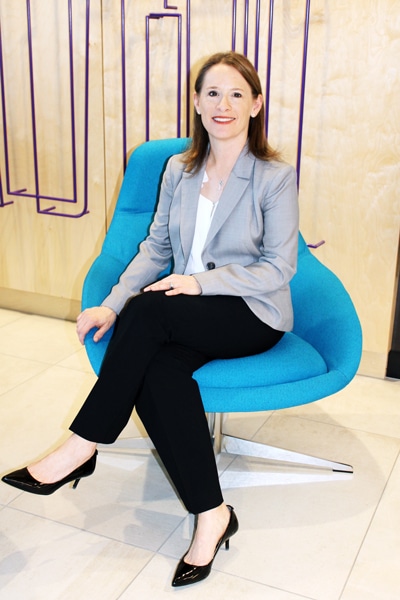
Even for many in business, the close of the year, as the holidays approach, is a time to kick back and relax. Not for Sarah Hilty, though, at least not at the end of 2017. As the holidays neared this past December, she oversaw the closing of a historic merger involving CH2M HILL, the global engineering company where she had served as deputy general counsel of corporate for more than a decade, and its new parent company, Jacobs Engineering Group. The resulting combined business, Jacobs, is an engineering powerhouse with footholds in sectors ranging from petroleum and chemicals to aerospace and defense to infrastructure and government service. But, bringing it together hasn’t been simple.
“As you can imagine, there is a lot of work around combining two companies of the size of Jacobs and CH2M,” Hilty says. “I was involved from the beginning, including board deliberations, the diligence process, the documentation process, and all the steps it took to close the transaction. CH2M’s legal closing process, including communications and Securities and Exchange Commission [SEC] filings, flowed through me, our general counsel, and my team.”
And, going back even further, it was her work with CH2M’s Strategic Transaction Committee of the Board of Directors, evaluating potential liquidity alternatives for CH2M’s shareholders, that helped precipitate the merger. The committee’s formation, however, was tied to the company’s distinctive employee-ownership structure.
“We always talked about our ownership structure as being unique,” Hilty says. “Basically, we reported publicly to the Securities and Exchange Commission and complied with all of their requirements. But, at the same time, we didn’t trade on a public stock exchange. The only way to buy or sell CH2M stock was through an internal market at CH2M HILL.”
The company’s internal market operated on a quarterly basis: each quarter, its board would make a determination about the stock price. “So, each quarter, the board was determining the price of the stock based on a fair valuation methodology as described in filings made with the SEC, and they would consider several factors as part of the total mix of information available to determine the fair value,” Hilty says. “And, each quarter, employees could place orders to buy or sell shares based on the price.”
Until 2014, Hilty says, the company was “100 percent employee owned.” That year, though, it decided it could no longer satisfy the demand of shareholders to sell shares in its internal quarterly markets. This led it to begin prorating the market.
“As the company began to prorate the market, when employees left, we allowed them to continue to hold shares,” Hilty explains, noting that previously employees were required to sell back their shares upon departure. The market became more dependent on buyers and how much the company decided to contribute in repurchasing its own shares. This shift, Hilty says, caused the company to become more employee controlled than employee owned.
It was the desire among shareholders for liquidity that propelled the board, in its ongoing evaluation of CH2M’s capital structure and potential strategic alternatives, to initiate a third-party solicitation process to evaluate the possibility of a sale of control. Hilty says the company approached four tier-one companies before it ended up entering into an exclusivity agreement with Jacobs consistent with the terms of Jacobs’ nonbinding indication of interest.
Hilty’s company may have lost its internal market and employee-ownership program, but its joining with Jacobs presents a plethora of new, exciting opportunities—so many that 95 percent of its stockholders approved the transaction. “I do think, culturally, employee ownership has been an important part of our history,” Hilty says. “At the same time, we received an attractive premium on our shares, and people are excited about the combination.”
The newly merged Jacobs boasts 74,000 employees and more than $15 billion in annual revenue. “It’s an amazing combination for our industry,” Hilty says. “The complementary services offered will establish Jacobs as a leader in global design and provide enhanced services for our clients.”
Thankfully, she does not believe the merger will affect the long-held culture that she had grown accustomed to in her twelve years with CH2M—a culture she describes as “respectful, collaborative, compassionate, and positive.” And, in those twelve years, she counts the merger as one of “the most interesting and rewarding professional challenges I’ve ever had.” Having come from a law firm where she specialized in mergers and acquisitions, it was an entirely new experience to move through a merger on the inside, as an employee of the company being acquired.
She’s spent the early part of 2018 incorporating the new lessons she’s learned into her day-to-day work, and she’s coordinating closely with Jacobs’ integration team to make sure the merger continues to go as smoothly as possible.
After all, she’s due for some relaxation.
***
Dorsey:
“I have been privileged to work with Sarah for nearly twenty years. She combines exceptional legal talent, extensive experience, and management skill in the service of her unwavering focus on her clients’ business goals.”
—Whitney Holmes, Partner
